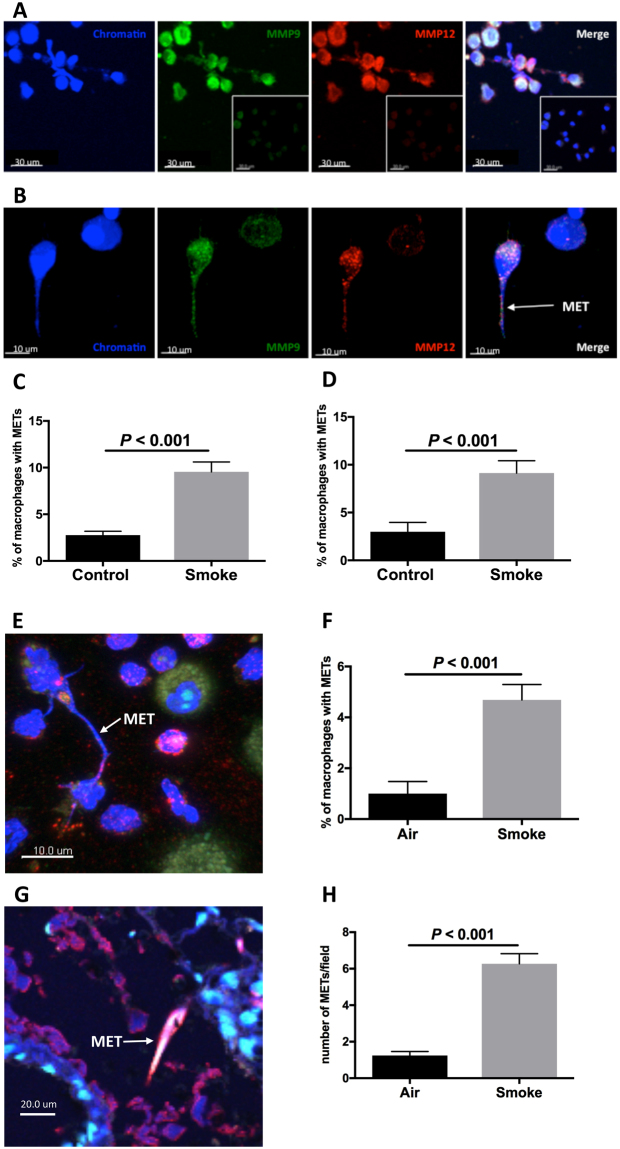Figure 1.
Cigarette smoke exposure induces formation of macrophage extracellular traps. Cigarette smoke extract (CSE) induces macrophage extracellular trap (MET) formation in human bronchoalveolar (BAL) macrophages in vitro (A–D). (A) Represenative image shows MET formation as characterised by extracellular chromatin, matrix metalloproteinase (MMP) 9, MMP12 and merged image; insert shows isotype control. Scale bars = 30 μm. (B) High resolution image of MET. Scale bars = 10 μm. (C) MET expression as characterised by extracellular chromatin, MMP9 and 12 (n = 20 individuals). (D) MET expression as characterised by extracellular chromatin and citrullinated histone (H3Cit), (n = 13). Exposure to cigarette smoke induces MET expression in murine lung in vivo (E–H). (E) Image shows MET formation by BAL macrophages. Scale bar = 10 μm. (F) MET expression by murine BAL macrophages (n = 13). (G) Image of MET in murine lung tissue. Scale bar = 20 μm. (H) MET expression by lung tissue macrophages (n = 10). Results are shown as air (or control) and smoke exposure (in vitro CSE or in vivo cigarette smoke exposure).

